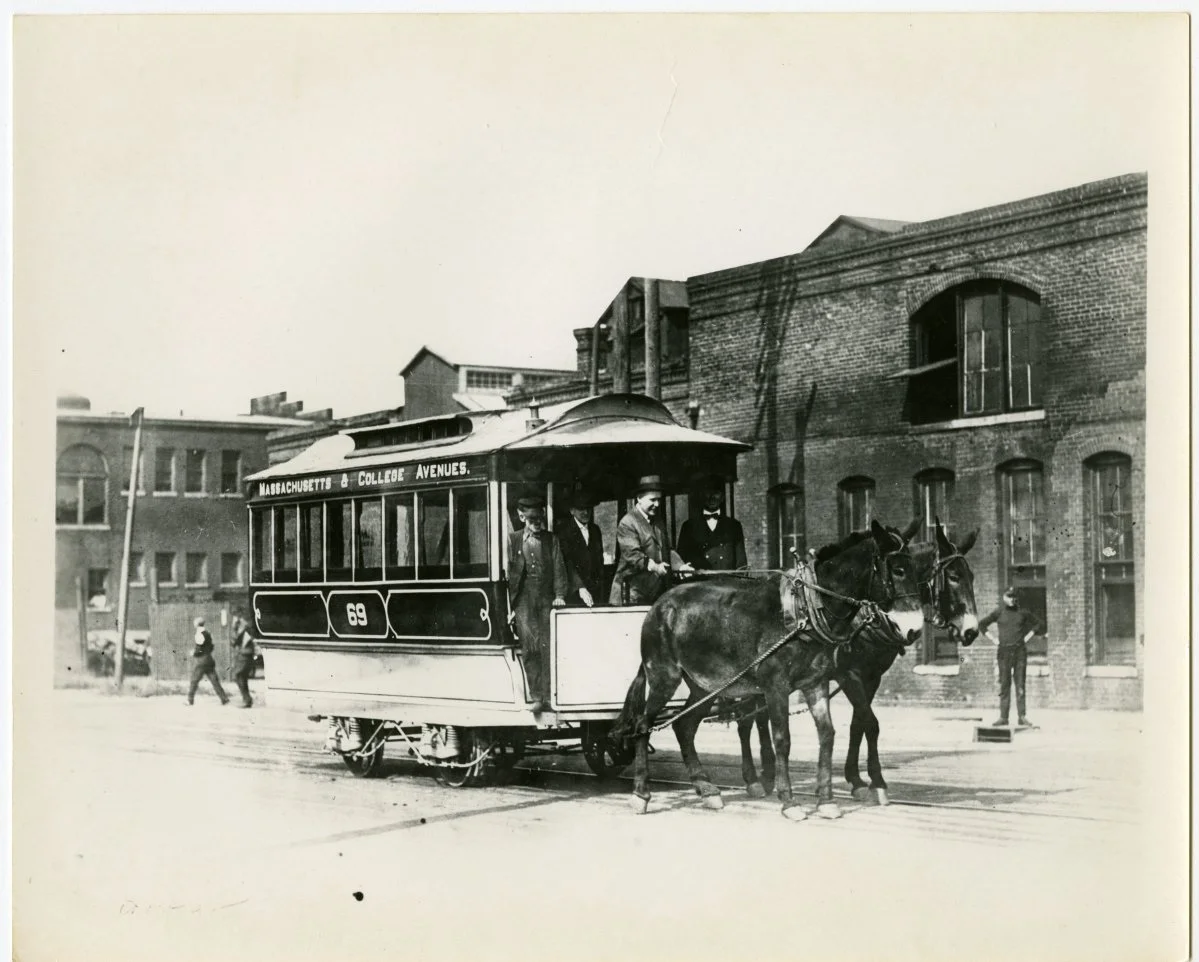With the interurban system dissolving in 1941 and streetcar systems converting to buses in the 1950s, many alive today do not remember nor even know the state had one of the world’s greatest transportation networks. In the 1920s, the electric railway system peaked with more than 15,000 operating trolleys and more than 2 million passengers in a year. Cars would depart the traction terminal in Indianapolis (trolley station) nearly every minute for destinations across the state, once passing the steps of the Indiana Statehouse. With the conclusion of the Golden Age of railroading in America, began the railway preservation movement.
Bracing for the future – creation of the Indiana Railroad
Before the traditional steam railroads came along, there were two options for transportation: horse or by foot. The advent of railroads made travel between towns convenient for the first time in Indiana’s history. This level of convenience was increased even further by the services of the interurban railroads. The interurbans wouldn’t only stop in town but could pick up additional passengers at almost any crossing.
-This level of convenience, however, came at a cost to the interurbans.
Electrifying Indianapolis’ Streetcar System for the 20th Century
Electricity – the invention that defined the beginning of the 20th century. Indianapolis’ streetcar system adopted the technology in the 1890s – ushering in the new century with it. Beginning in 1864, transportation in Indianapolis was provided by horse or mule-drawn carriages on rails through the street. By 1890, Citizens Street Railroad Company, the dominant streetcar company in the city, was operating 260 cars with some 1100 horses and mules. The inefficiency ultimately proved to be problematic for the City of Indianapolis.
Sparking Innovation – Electrifying Indiana’s First Traffic Light
Leslie Haines was born in 1883 in rural Hamilton County, Ind. at Carmel, which numbered less than 400 residents at the time. Following his dream, Haines enlisted in 1906 and circumnavigated the globe in Roosevelt’s Great White Fleet, training under Dr. Lee DeForest, a leader in the development of wireless technology. Meanwhile, the Union Traction Company of Indiana had set up shop in Carmel, allowing Carmel residents and storeowners to tap into a valuable new asset: electricity.
Sparking a Calling: Our Story
At this point-in-time, our team rolled up our sleeves and entered the scene in crisis mode as part of a serious effort to acquire as many of the remaining electric railway cars as possible. Although beaten and battered, these cars were the last glimpses into an industry that built Indiana into what it is today - a cultural phenomenon that employed thousands, moved millions, and opened Indiana up to economic possibilities never before seen nor contemplated.
Grant awarded for preservation of last Indianapolis streetcar
The Hoosier Heartland Trolley Company was awarded a $3,500 grant to relocate and stabilize the last-remaining Indianapolis streetcar, Indianapolis Railways No. 153, on Saturday, October 27, 2018. This rare grant request fostered a unique collaboration between the Marion County Historic Preservation Fund of the Central Indiana Community Foundation and Indiana Landmarks.
An Adventure in Saving Hoosier History
-Long days, late nights, conference calls, precision logistics, all while balancing full-time careers, family obligations, etc. This is what occurs day-in and day-out within preservation groups across the country. For our new nonprofit organization near Indianapolis, it has been no exception relocating Indiana’s last surviving trolleys.
Desiring a Better Life - Sparking Opportunity
The level of service delivered by the interurban companies opened up business and educational opportunities to Indiana’s rural citizens during the early 1900s. Rufus Thomas was one of those Hoosiers - sparking a future of opportunity through the interurban system that had never been an option for him.








